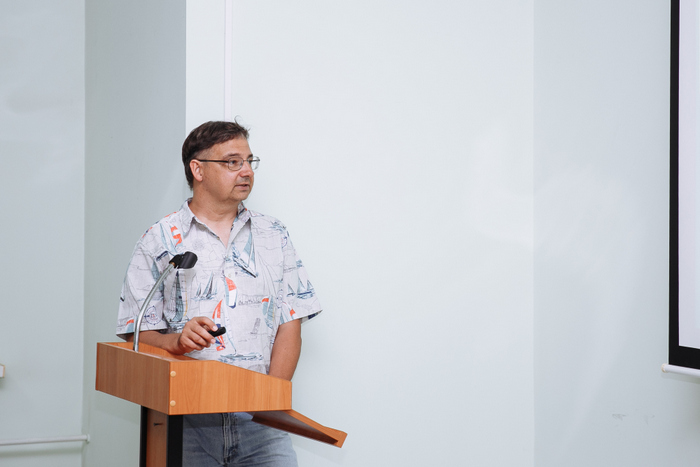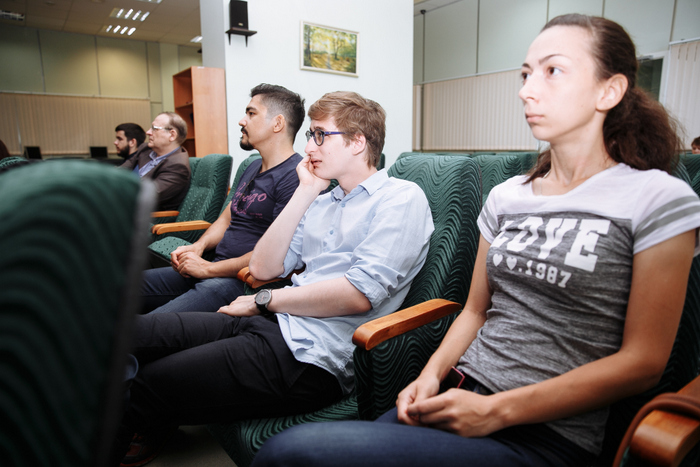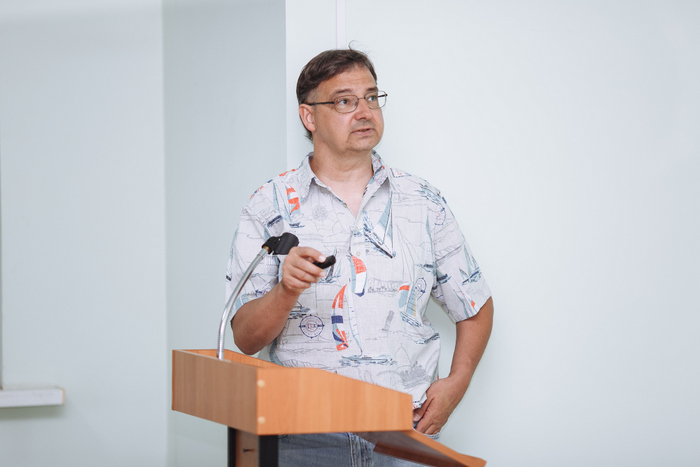In August Ralf Kaiser, Prof. of University of Hawaii (Honolulu, USA), visited Samara National Research University. In the frame of the international scientific summer school “Modern methods of quantum chemistry in applications” he delivered a lecture about the synthesis of complex organic molecules in interstellar medium.
Ralf Kaiser as many world scientists is sure that life in the type we know it was born in the space and it was “brought” to the Earth by meteorites and comets.
The case is that one of the products of vital functions of a star is polycyclic aromatic hydrocarbons (PAHs), i.e. hydrocarbons containing two (or more) condense – having two common atoms of hydrocarbon – benzene rings. Low temperatures in dense interstellar gaseous dust cloud allow PAH condensing on the surface of micro firm particles of dust – grains. The grains covered with ice gather organic molecules rich with hydrocarbon. In these grains a synthesis of more complex compounds including molecules in the structure of living earth organisms, up to monosaccharides, amino acids and nucleotides which in their turn are the basis of RNC and DNA can occur under the influence of space rays and star light.
There is also a hypothesis that amino acids (“bricks of life”) were brought to the Earth by the meteorites. The formation of such molecules in the space is proved by isotopic analysis of meteorites found on the Earth. It is considered that the source of space acids in the Solar System is Kuiper belt which was formed of asteroids and small planets behind Neptune. But recently similar belts were found with other star systems, for example, Vega. It means that there is a chance that life in the form habitual for us can exist on other planets of other systems.
At the same time PAH exist on the Earth. And they are formed as a result of fuel combustion. In this case they turn out to be very carcinogenic and harmful for life.
“We see an ambivalent role of PAH: they are harmful for health of the living organisms on the Earth, at the same time in space they are the basis for creation of complex organic molecules which can lead to the formation of life”, - Ralf Kaiser made the point.
At Samara University Ralf Kaiser jointly with Prof. Alexandre Mebel (International University of Florida, USA), Michael Heaven (University of Emory, USA), Valeriy Azyazov (Samara University) in the frame of the mega-grant works over the study of the processes of PAH formation in the course of combustion.
“In the frame of the mega-grant on the topic “Development of physically justified combustion models” we are investigating the mechanisms of PAH formation from the point of view of the reduction of harmful emissions and planning of the purer combustion processes, - Ralf Kaiser says. – At the same time these are fundamental mechanisms, i.e. they are similar both for space and the Earth. Having learnt how PAHs are formed we can on the one hand increase the rate of combustion (in this case the fuel will be burnt completely, it means that there will be no harmful emissions) and help to preserve people’s health, on the other side we will understand deep processes occurring in the Universe”.
The professor believes that Samara University scholars – young physicists, chemists and biologists – can held research in the sphere of astrobiology as their colleagues all over the world do it: “I think that for a university with a strong space element such a theme of research would be interesting. I hope to work over the joint projects in this sphere”.
Special hope is put by Ralf Kaiser on the experimental setting for investigation of combustion reactions which is now being created at Samara University in the frame of the mega-grant. “In Honolulu there is a setting which allows determining how the synthesis of complex organic molecules happens in space conditions. But how PAHs are being created we try to understand from the experiments which are being conducted on the setting at Berkeley. The problem is that we have access to it only for two weeks annually”, - Ralf Kaiser explained his interest in Samara project.
The experimental setting which is going to be assembled at Samara University to the mid-summer – beginning of autumn 2018 will allow measuring the results of chemical reactions which can lead to the formation of PAH. In the main chamber of the setting with the help of turbo-molecular pipes very high vacuum will be created. “In such conditions it will become clear how reactions (in the space as well) happen without “earth” hindrances, - Alexandre Mebel, director of the mega-grant, explained. – We are going to begin experiments in the summer of 2018”. Prof. Kaiser suggested the synthesis of fullerene – carbonaceous molecule with the formula C60, which resembles a football and consists of five- and six-membered rings. It is a present to Samara for the FIFA World Cup the rounds of which are going to happen exactly at this time.
“We hope for this setting greatly. In space there are many molecules including the ones which are not synthesized on the Earth. They should be learnt to understand the genesis of the Universe and how life aroused on our planet. So we are always going to have work”, - Ralf Kaiser concluded.
Photo: Ekaterina Vinokurova (photo club “Illuminator”)












